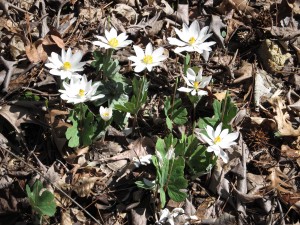Hepatica (Hepatica spp), from the Latin word “Hepaticus” meaning liver, is sometimes cataloged as “Liverleaf” or “Liverwort” (USDA hardiness zones 4 – 9). It is one of the first spring wildflowers to bloom (March-April). H. americana, native to the eastern U.S. and Canada, bear showy white flowers that are sometimes tinged pink or blue. H. acutifolia, a Midwest species, features white, pink, lavender, and blue flowered forms. Hepaticas are often purchased from native plant nurseries on-line.
Hepaticas are exceptionally long flowering, long-lived and easy to grow. Individual ½ – 1 inch wide flowers arise before the new foliage unfolds. The anemone-like flowers stand atop hairy 4-8 inch tall stalks. Each flower has 6-10 petal-like sepals subtended by three bracts.
At the start hepaticas tend to grow off slowly. They grow 3 to 6 inches tall in a rich woodsy soil that is well-drained and in a part shade (early morning sunlight) garden spot. In the southern U.S. they grown under heavier shade. Hepaticas thrive in moist and struggle in dry soils. Under optimal growing conditions, vigorous plants will self-seed and form naturalized colonies, each greater than one square foot in area and will bloom prolifically.
The large three rounded lobes (tri-lobed) basal leaves have a dull or matte finish over their upper surface. Late in the summer leaves turn dry and leathery. In southerly climates the old foliage persists all winter and new flowers emerge through the leafy debris.


 Posted in
Posted in 
